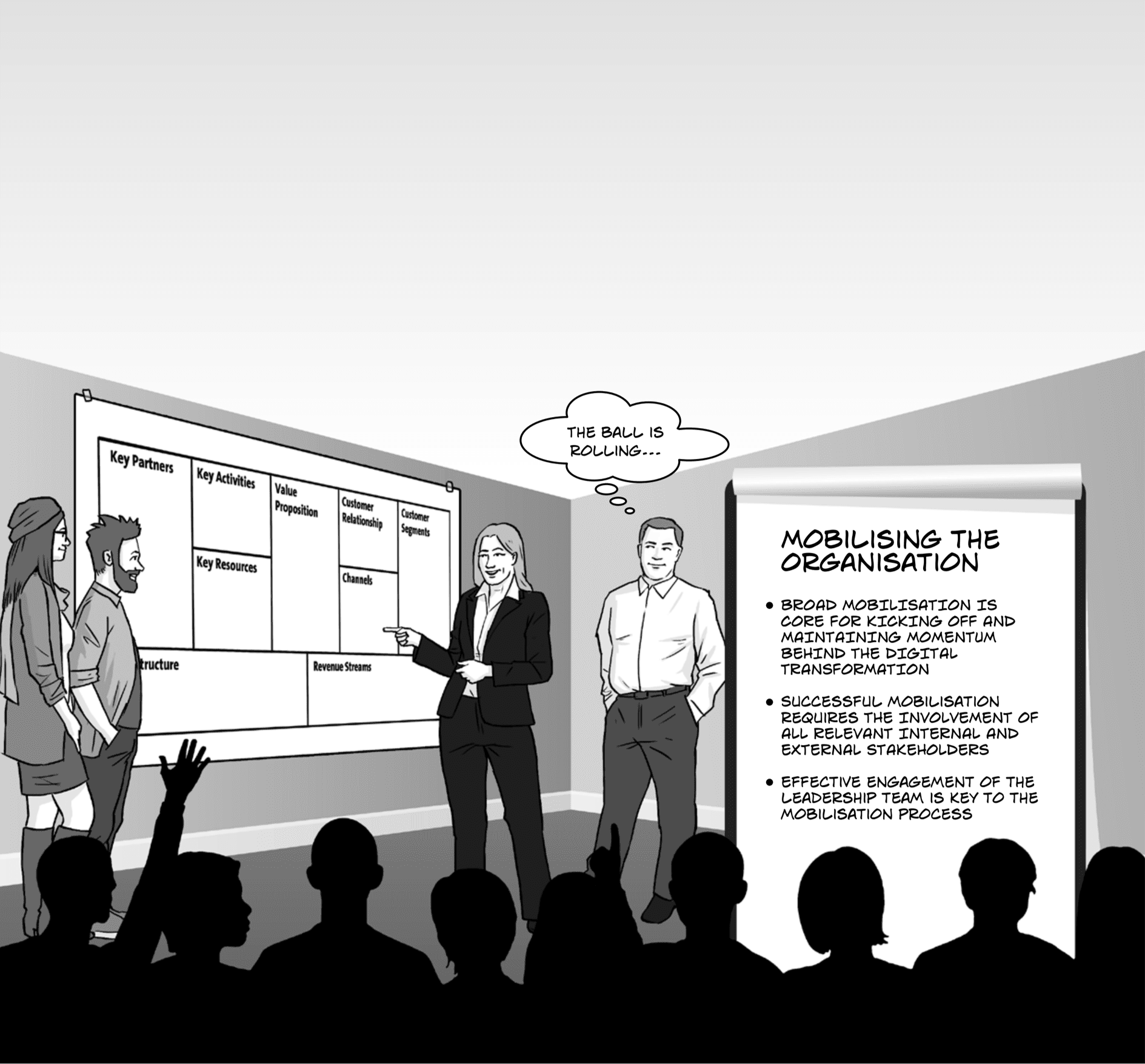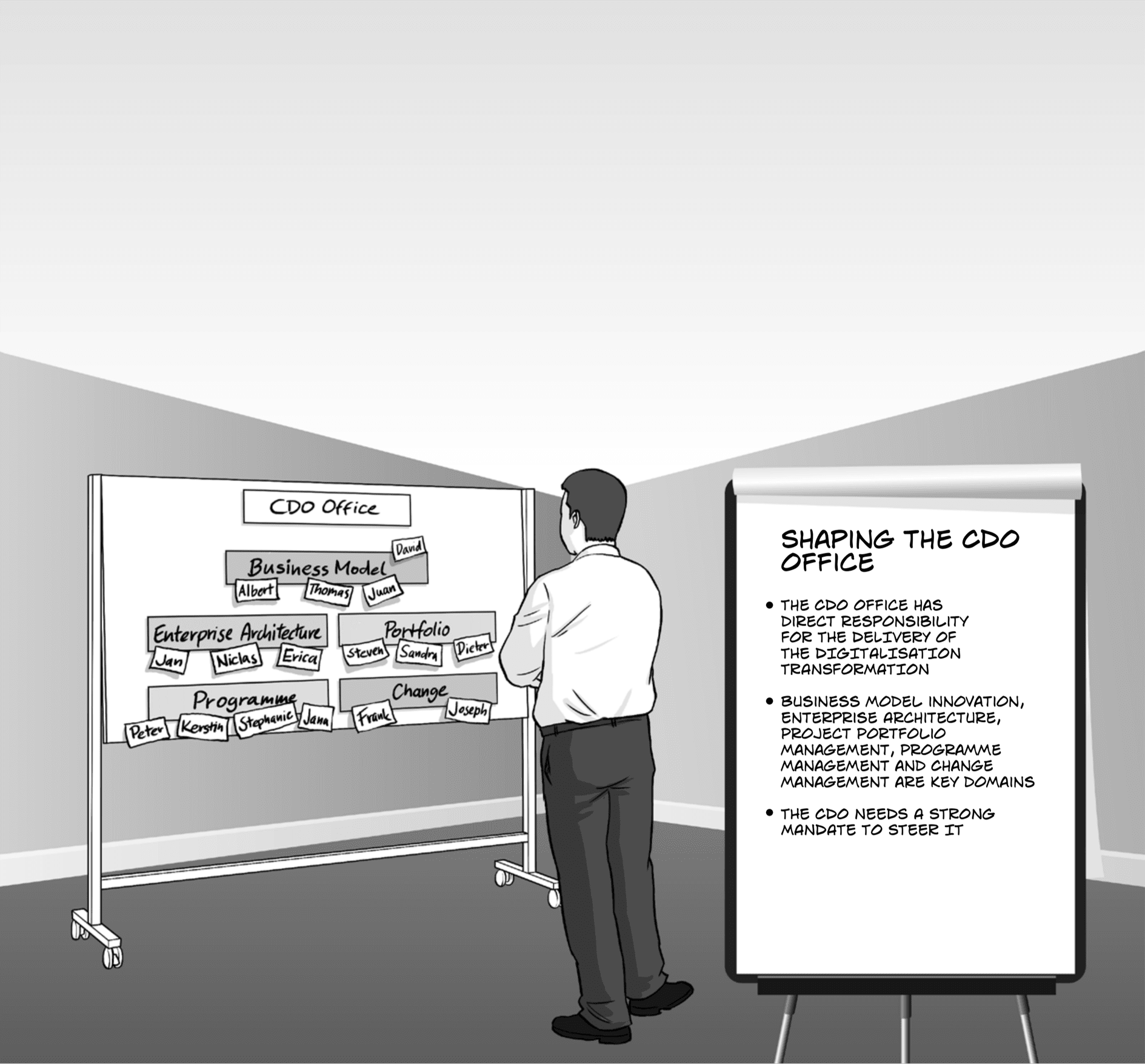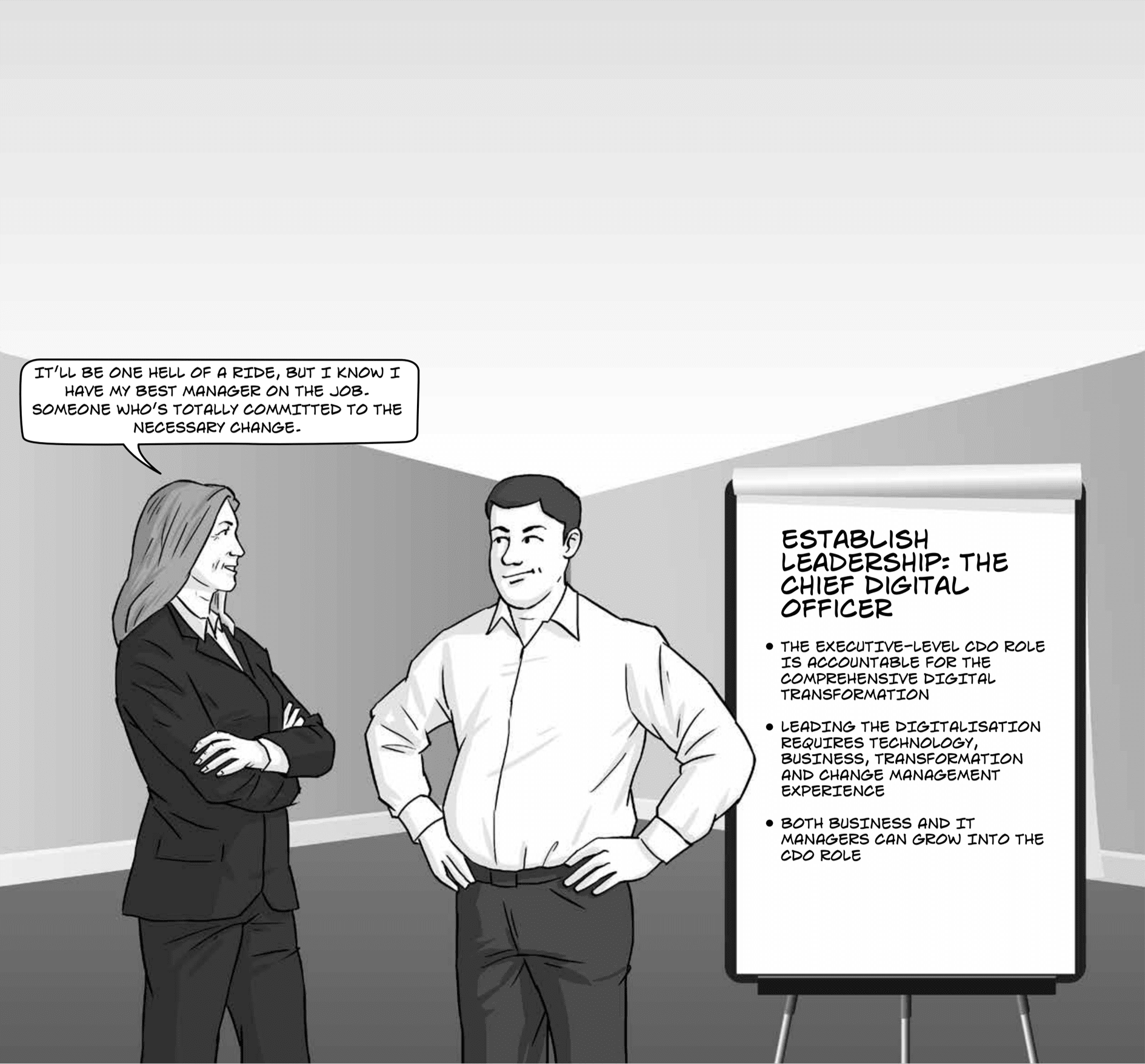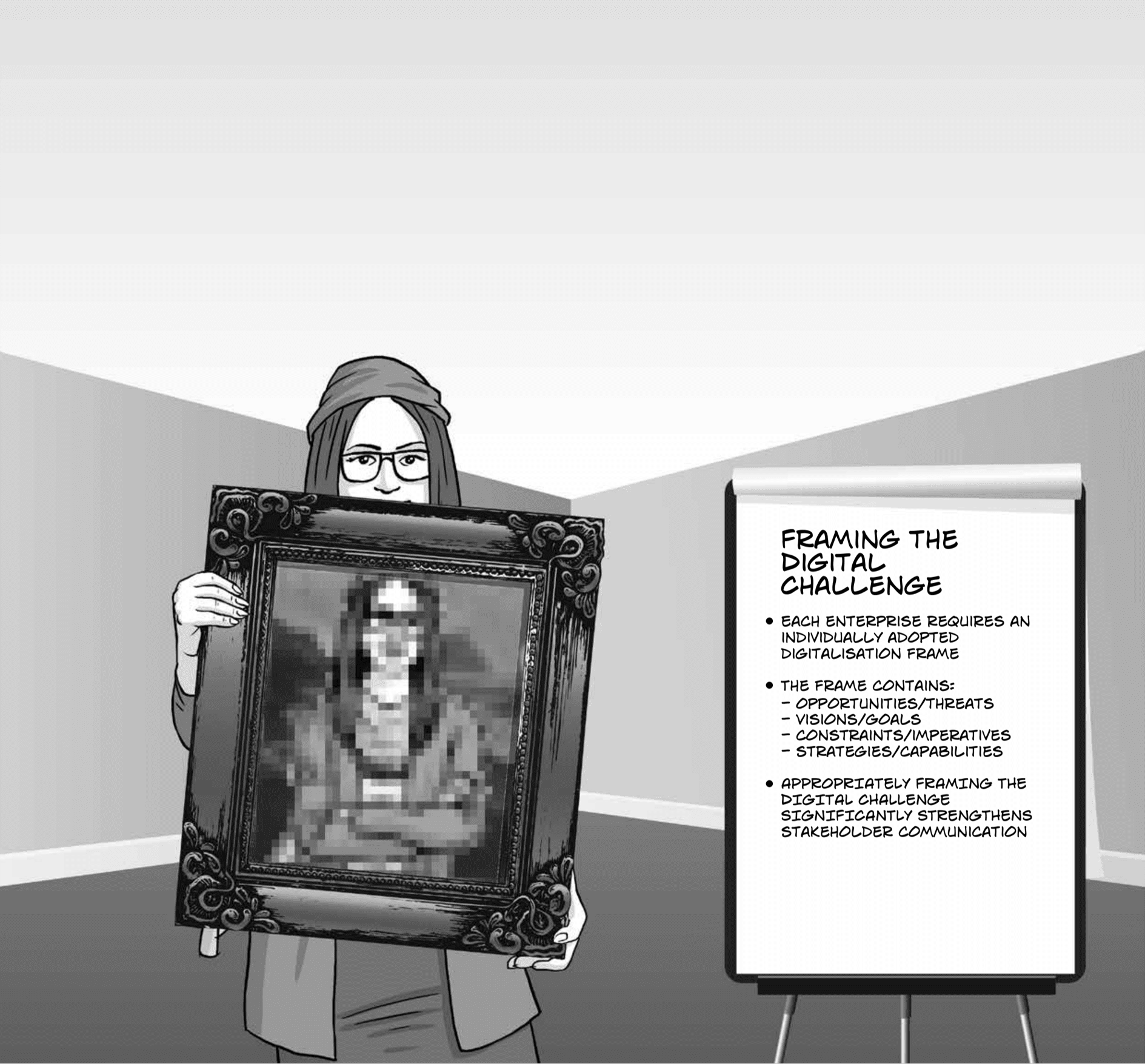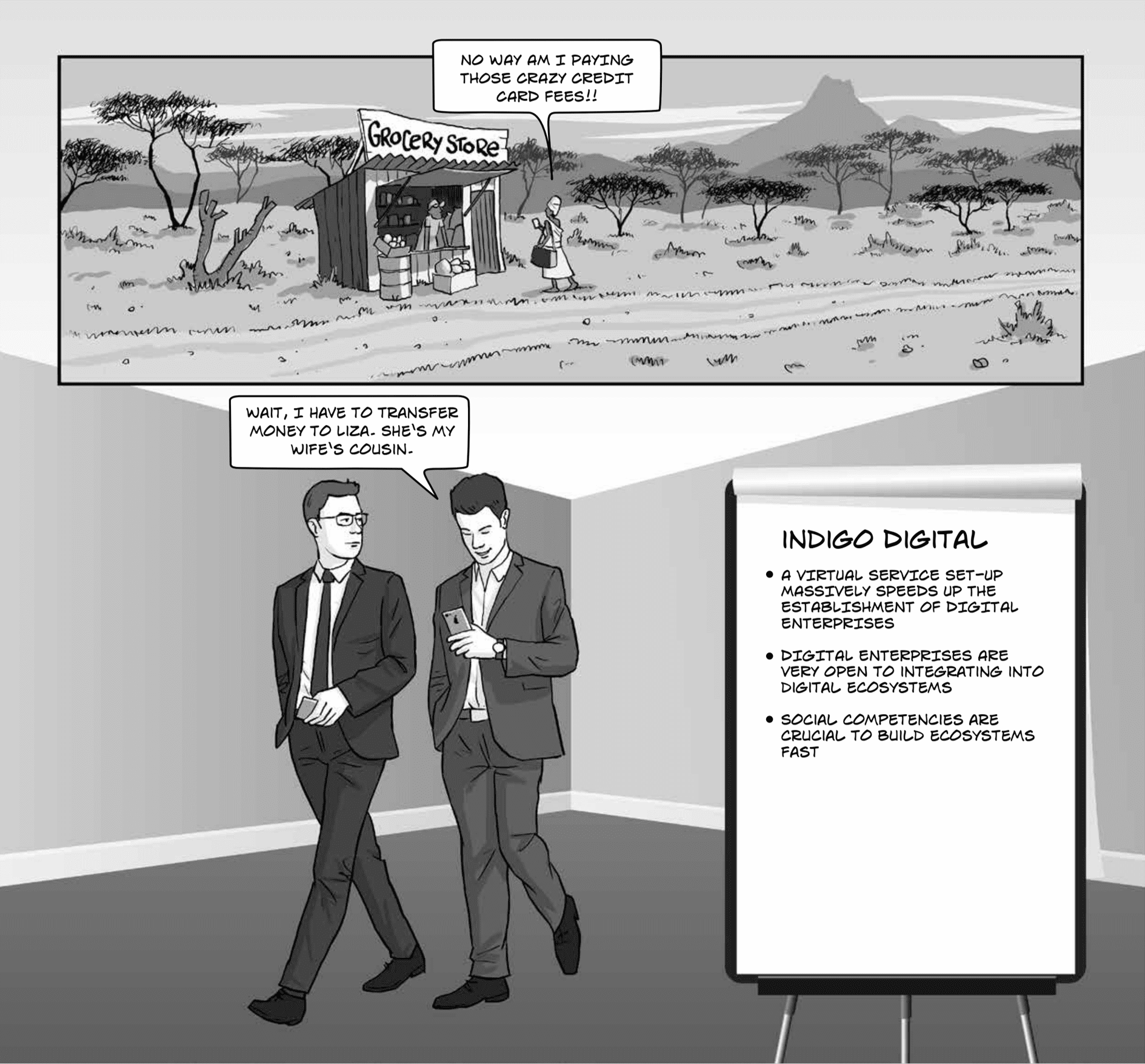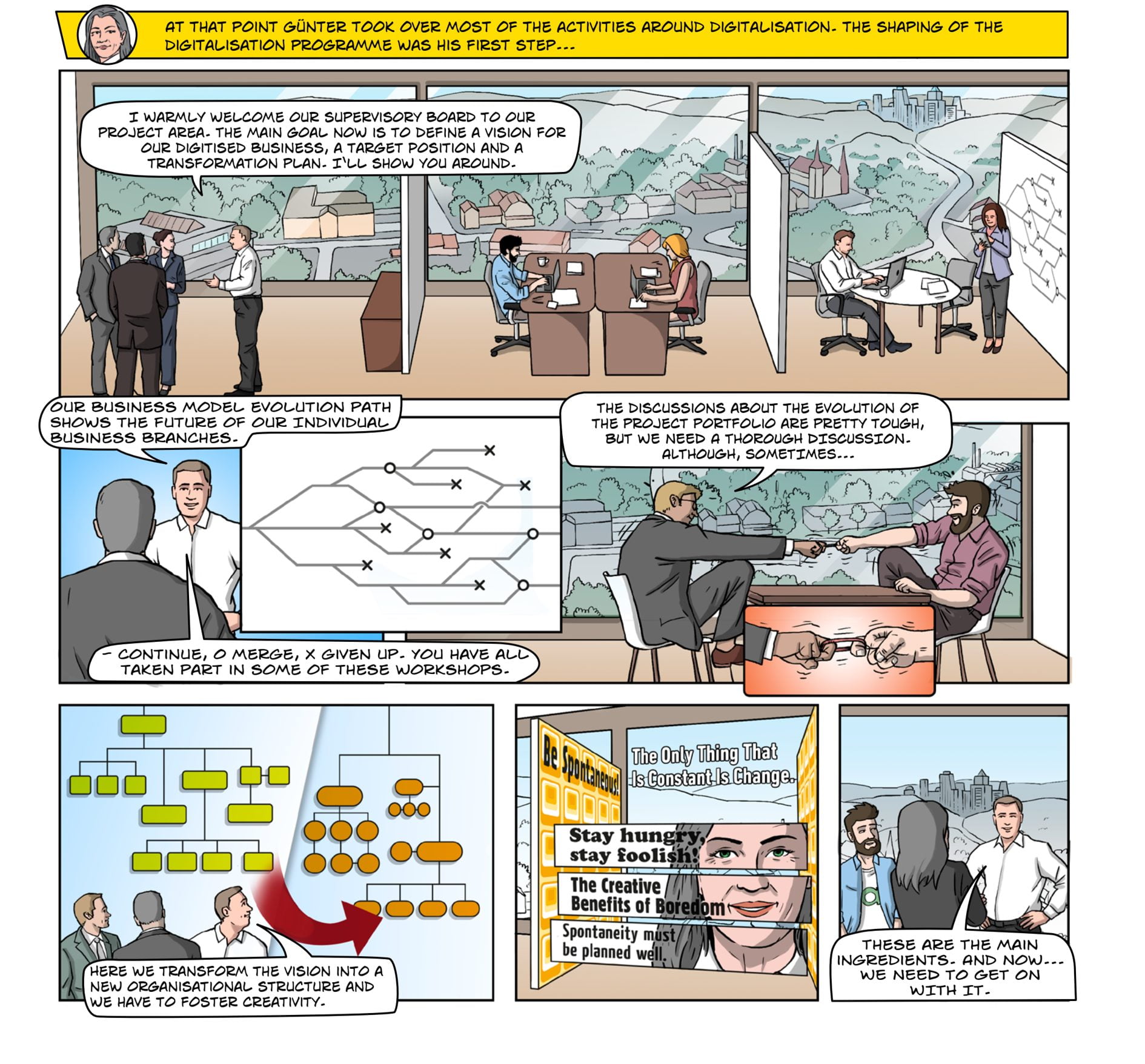The term ‘mobilisation’ was first used around 1850 to describe the preparation of the Prussian Army for deployment. ‘Mobilisation is the process of assembling and organising troops, material, and equipment for active military service in time of war or national emergency. As such, it brings together the military and civilian sectors of society to harness the total power of the nation. It is the mechanism that facilitates successful prosecution of any conflict […]’ Nations, kingdoms and dynasties have been mobilising the military for millennia, often including large numbers of personnel and a wide variety of logistics support. Military mobilisation by the US during World War II was one of the largest and best-organised in the history of warfare.
Continue reading8.5 Embedding the CDO into the Organisation
The CDO is driving comprehensive change across the organisation. While he or she is directly responsible for a number of key tasks crucial for the success of this transformation, the CDO also needs to interact effectively with almost all other departments of the organisation, typically in a matrix-style approach. In order to drive forward the digitalisation agenda, the CDO and the CDO Office will work with the other CxO functions for highlights of those interactions). Given the number and variety of necessary interactions with other departments in the enterprise, the CDO needs to act from a position of strength as regards the ability to influence the enterprise.
Continue reading8.4 Shaping the CDO Office
We introduced the role of the Chief Digital Officer, the CDO, as the main agent for the transformation in a company transitioning from a traditional business model to a digital one. Once the initial transformation is achieved, lasting potentially several years, the CDO role might be assumed by another CxO role on the Executive Board, maybe even evolving up to the new CEO role in a digitalised business. In this section, the transient nature of the CDO role is described further. It is the core responsibility of the CDO to build the digital capabilities of the company. He or she needs to shape the digital transformation and drive it within the enterprise’s organisation.
Continue reading8.3 Establish Leadership – The Chief Digital Officer
The digitalisation of the business entails a fundamental change of the enterprise’s business model based upon the extensive and pervasive use of digital technology. Digitalisation will require the comprehensive transformation of the business, which typically leads to change, conflict and resistance in the organisation. The balance of the old business model will be shaken up and structurally adapted to reap the promises of digitalisation. The role of technology changes massively from a support function to an inherent driver of the products and services offered.
Continue reading8.1 Framing the Digital Challenge
‘A picture without a frame is like a soul without a body.’ This quote from the famous painter Van Gogh relays the importance of frames in the context of presenting and viewing a picture. Frames are used to better define and protect the framed object (e.g., a piece of artwork) amidst its surroundings, to provide focus onto the object and, often, to enhance certain characteristics of the object. We are, of course, quite familiar with the relevance of frames in the context of pictures. However, the act of ‘framing’ is not only relevant but also critical to achieving the optimal solution to non-trivial challenges.
Continue reading6.2 Indigo Digital
Indigo Digital is a Zurich-based fintech start-up. The purpose of the company is to bring financial inclusion to the unbanked and underbanked via fair, affordable and standardised mobile-based financial services. Standardisation drives down costs and Indigo passes on the benefits of the advantageous cost structures to its clients. Imagine a Moroccan mother with five children living in the Atlas Mountains; her husband works in Lyon and transfers money to her every month with a 10–15% transfer cost. In contrast, Indigo offers international transfers that cut the mix of high fees and unfavourable currency exchange rates typically taken from underprivileged customers.
Continue reading4.1 Digital Communication Patterns
Digitalisation aims to optimise communication patterns between humans and their relationship with each other. This goal is realised via digital media, for instance in retrieving and processing information or accessing services. The digital medium takes on the function of overcoming the limitations of natural communication within our private, social and corporate structures. Several means of digital communication have existed for many decades but were often isolated from each other.
Continue readingChapter 9: Shaping the Digital Transformation
The role of the CDO has been created in the organisation to take full responsibility for the digital
transformation. Leadership has therefore been established for this profound and comprehensive
undertaking. As the first step, the digital transformation now needs to be shaped, which is a core responsibility of the CDO. Given its comprehensive nature, shaping the digital future and the transformation
necessary to reach the target is an exercise that will involve the whole company.
Chapter 8: Launching and Governing Digitalisation
Recently, there was an extraordinary article in an ordinary in-flight magazine on how women from
remote villages in India were succeeding as community leaders and business entrepreneurs. Those
who have some familiarity with how difficult it is for a village woman in India to step outside her
household chores will immediately recognise these achievements as extraordinary. Interestingly,
these achievements were made possible largely due to the success of ‘Digital India’, launched in 2015
by the Indian government.
Chapter 7: Comprehensive Transformation Required
The first two parts of this book explored the promises of digitalisation as well as the strong necessity
for enterprises to meet this challenge and act accordingly. Now assume that the top management of
the enterprise has developed a thorough understanding of the merits of digitalisation in their
business context, has a sound high-level business idea as to which direction digitalisation should be
taking and has decided to embark on a digitalisation initiative. As we have seen, such an undertaking
typically requires nothing less than the substantial adaptation and sometimes the comprehensive
transformation of the enterprise’s business model.
